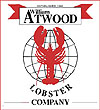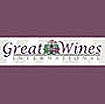By
Sadie Darby
With
one panoramic sweep, your gaze flits across the snow-covered
Alps
of Northern Italy and Switzerland, to ancient walled villages
perched atop
vine-covered hills, and in the foreground, fields of rice flanking
the
many rivers of the Po Valley. And so our gastronomic tour of
the wine country of Piedmont and Turin begins!
On
the flatlands of the valley, the Po River and her tributaries
run west to cast across Northern Italy. Corn, sugar beet, a
myriad of vegetables, flowers, and fruit and nut trees line
the rivers and roadways. Arborio and carnarole rice, the prerequisitc
ingredient in risotto, is cultivated by the riverbanks. Hazelnut
of POG status (the food appellation equivalent of DOC for wine)
find their way into locally produced chocolate, nougat, spread
and desserts. In the 19th century, the Turin artisan Michel
Prochet combined hazelnut flour and chocolate to produce the
meltingly smooth gianduja found in so many Piedmontese confections.
Lime, chestnut, acacia, sunflower, dandelion, lavender and millefiori
honeys are mixed with toasted hazelnuts and chestnuts - delicious
drizzled over gelati as well as your morning toast. A stroll
down the narrow streets of Asti, Alba, Bra or any of the picturesque
towns of northern Italy offers a multitude of small shops dedicated
to cheese, truffles, vinegars (an aged balsarnico which cost
$250 in Canada was $100 in Asti), olive oils, dry and fresh
pastas, gelati and chocolates.
|
Click
on Images for Captions |
The
most famous of Piedmont's contributions to the world of gastronomy
is the fabled truffle. Both black and white truffles grown underground
and are hunted with the aid of highly trained truffle hounds.
Long reputed to be an aphrodisiac, truffles have been found
to contain steroid compounds similar to sex hormones, with the
white variety have the greater concentration.
The
lumpy surfaced black truffle is available year-round. Sold both
fresh and preserved, it is readily available in restaurants
and for sale in specialty shops. Restaurateurs of the area have
devised many exciting and delicious ways to enjoy this delicacy.
Very rare, and much more expensive, is the smoother surfaced
white truffle. Only in season from October to December and best
eaten raw, the white truffle is intensely fragrant. Mushroom,
honey, straw, garlic and damp earth are the aromas of a healthy
specimen. The exact location of the harvest is known only to
the truffle hunters (trifulao). Harvesting is done at night
to ensure the secrecy of sites where the tuber has been previously
found. There is a synergistic relationship between the mushrooms
and the roots of chestnut, lime, oak and various other trees.
Every
October the Truffle Fair in Alba celebrates cultural and folk
events. When the air becomes heavy with truffle aromas, gastronomes
from around the globe gather to enjoy the much anticipated truffle
feast. Unfortunately, attempts at truffle cultivation have been
unsuccessful. This will almost certainly guarantee the continued
mysticism surrounding the harvesting and also the pricing of
the delicacy.
If
you are looking for a wonderful lunch or dinner in truffle country
near Barbaresco, try the internationally famous Ristorante La
Contea in Nieve. Request a table by an open window and enjoy
the breezes while sipping from the restaurant's cellar.
Amiable
chef/owner Tortino's 'Timballo primaverile tartufato', an ethereal,
truffled spinach soufflé under a layer of tender custard,
napped with a hazelnut cream sauce, is a symphony on the palate.
Coda de vitello Piedmontese brasato al Barbaresco is gently
braised Piedmont calf tail in a rich barbaresco sauce. A bottle
of the same Barbaresco is the perfect accompaniment to this
superb dish.
While
visiting Nieve, drop into the village enoteca where over 80
area wineries are represented. In fact most of the wine regions
have similar enotecas, making the ideal one-stop tasting labs
for wine lovers looking to get a fix on regional wine character.
A
Sidetrip to Turin
Even if visiting Piedmont primarily for its wine, take a day
or two to visit Turin, a fast 70 kilometers to the north-east
of Alba. Turin, or Torino, is the first Italian capital after
the Unification of 1861 and Piedmont's largest city. Turin's
history spans over 2,000 years as a major European city in technology,
art, culture, entertainment and gastronomy. An outstanding view
of Turin and the Alps to the north can be enjoyed from the viewing
platform of the Mole Antonelliana di Torino. The miter-shaped
tower of The Mole has been adopted at the emblem of Turin. Originally
intended as a synagogue, when the tower's construction costs
became too costly, the Jewish community gave the site to the
city. Now transformed into the National Museum of Cinema with
3,200 square meters of displays on five levels. the tower is
a must-see for everyone interest in film.
The
museum has acquired examples of the first moving images up to
the most recent films. Having 7,000 film titles in it's library;
9,000 works of art (paintings and old prints), 125,000 photographic
documents and much, much more, The Mole is considered to be
of world importance in the film arts. Presentations are both
interactive and captivating. Don't try to rush through! The
cafes of Turin are famous for a piping hot beverage made with
coffee, chocolate and cream. The coffee is espresso, the chocolate
is thick, rich and smooth, the cream is cool and lightly whipped.
This concoction is called 'bicerin' and is best enjoyed in a
small historical coffee shop of the same name. A bicerin is
the perfect fortifier before a day of shopping at Europe's largest
outdoor market, Porta Palazzo. Located in Piazza della.
Republica,
the market offers a myriad of fruits, vegetables, flowers, fish,
crustaceans, meats, cheese, breads, sweets-any and every comestible
one's heart could ever desire. Live chickens, ducks and pigeons
are crated beside canaries and budgies. Clothes hang from makeshift
racks, cheek to cheek with pots, shoes, dishes, espresso makers,
perfume-all for sale amid riotous colours and non-stop bustle.
Thankfully, enormous, sturdy shopping bags are also available
for only a few dollars.
After
a morning of heavy-duty shopping, visit Caffe Baratti in Piazzi
Castello for a well deserved lunch. Opened in the late 19th
century, Baratti offers traditional regional specialties as
well as light lunches. Try a selection of 'tramezzino' - tiny,
lighter than-air sandwiches and don't forget the dessert tray.


























